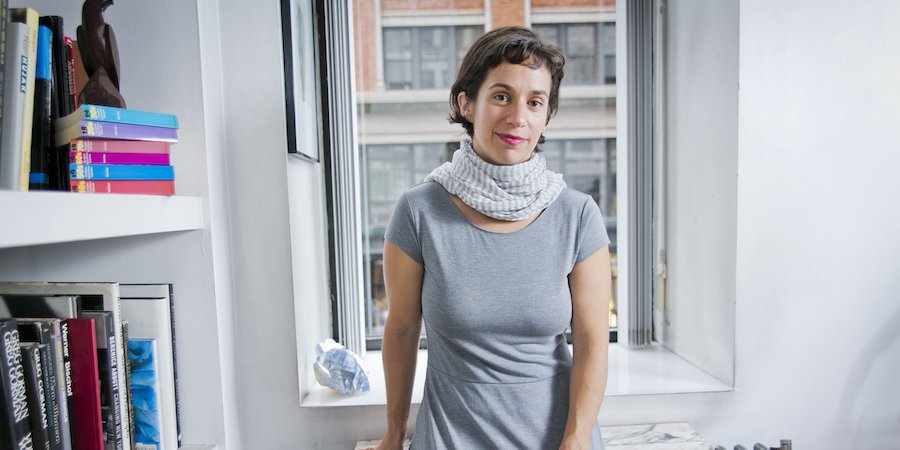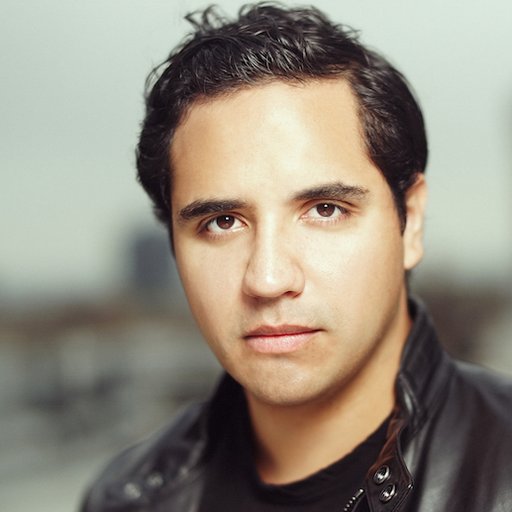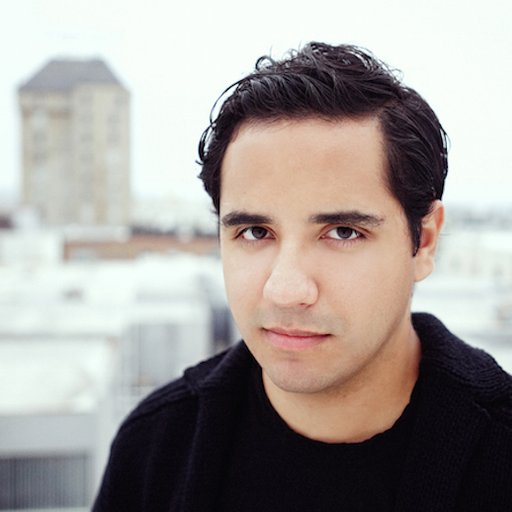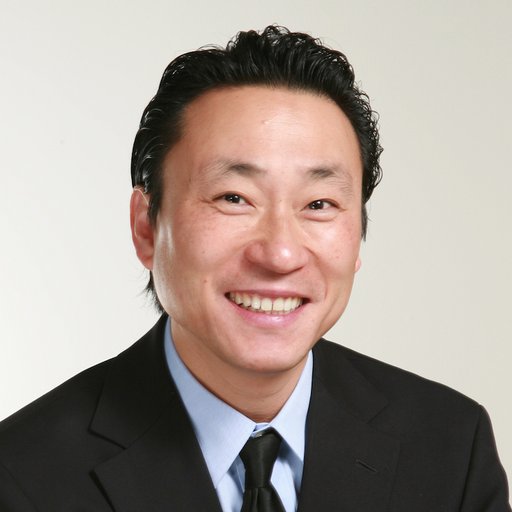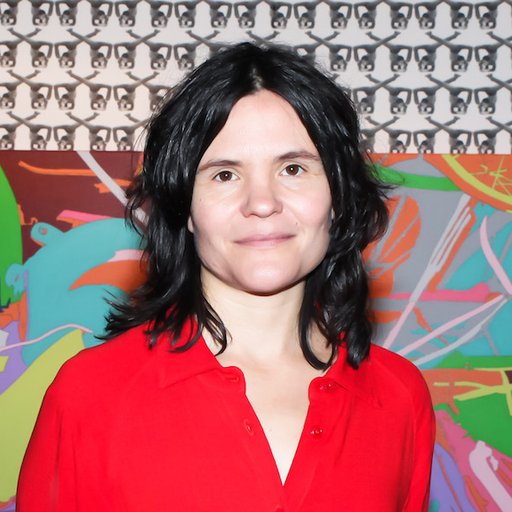As the director of the nonprofit art organization Artis, Yael Reinharz spends her days in a spare, sunlit office on the northern border of Manhattan’s Chinatown brainstorming ways to make international cultural capitals like New York pay greater attention to Israeli art. It’s not an easy job. As one of the most embattled art scenes on the planet, Israel’s artist community has in recent years had to struggle with a “cultural boycott” against the country by artists—including, this past February, 1,000 British petitioners headlined by famous names—who refuse to show in the country until the Palestinian situation improves. At the same time, there are menaces from within: Israel’s hard-right culture minister Miri Regev has threatened to withdraw all state funding for any programming containing a hint of broadly defined “anti-Zionism,” raising the specter of censorship in the famously disputatious democratic country.
In light of this continuous strife at home, however, Reinharz’s efforts have proven remarkably fruitful. To a degree far exceeding the country's tiny size, Israel’s art is renowned—and coveted—around the globe.
Reinharz, who started at Artis (pronounced Art-izz) in 2007 after a career at Creative Time, Matthew Marks Gallery, and other top New York organizations, has accomplished this feat through a range of methods—from giving Israeli artists grants to travel the world to bringing art tastemakers on tours of Tel Aviv and Jerusalem to helping international institutions acquire Israeli art through targeted donations. The organization has a yearly budget of over $1 million, and has distributed more than that amount to allow artists and curators to create and display the country’s art in 16 countries. All the while, Artis has expertly balanced the need to give artists unconditional support and succor while steering clear of Israel’s political fray.
To find out how Israeli contemporary art became the sensation that it is, Artspace editor-in-chief Andrew M. Goldstein sat down with Reinharz for a conversation about the myriad pressures on the creative community, what it takes for an artist to make it internationally, and the standouts in the country’s next generation of artists.
How was Artis founded?
We were founded by the philanthropist, visionary, and collector Rivka Saker, who splits her time between New York and Tel Aviv. She is currently the managing director of Sotheby’s Israel and founded the auction house’s Tel Aviv office. She’s been involved in the market element of the art world for a long time, but she has also thought hard about her role in the community of artists in Israel.
In 2004 she was looking at the overall place of Israeli art in the art world, and the disparity between visual artists in Israel being really interesting and on par with what was happening internationally yet not having the visibility that they merited, so she contacted the Armory Show—which at that point was the big game in town—to create a platform for artists from the country. She put together a publication that went out to the entire Sotheby’s list, she created a number of events, she helped Andrea Meislin start her gallery [in Chelsea, which predominantly shows Israeli artists], and she commissioned some exhibitions at the old Chelsea Art Museum to generate a concentration of attention on the region.
And it worked. By the next year, what had started out as Israeli Art Week in New York had essentially become Israeli Art Month, although it wasn’t called that, and it started to build momentum. By the time I had come to the organization, it already had a track record in New York, but Rivka was looking for opportunities for promotion and expansion, so I got involved.
I remember that a few years back Israeli art seemed to be having a moment in the United States, with artists like Yael Bartana, Guy Ben-Ner, Sigalit Landau, Tamy Ben-Tor, Omer Fast, Ori Gersht, and Keren Cytter all breaking out in a big way. I’ve now learned that this happened directly after Artis hosted its first research trip to Israel in 2007 for a group of prominent arts professionals and museum directors including Klaus Biesenbach. Who else was on the trip, and what arose from it?
That was a great trip [laughs]. A bunch of us who were involved with Creative Time became the Artis organization in New York on the side, and we looked at creating a trip for leading art professionals, mainly curators and writers. Klaus was someone we had approached, and because of his schedule we didn’t know until the last minute whether he was coming. In the end he couldn’t be there for the entire trip, but he came with a mission and accomplished so much as a result. He had familiarity with Sigalit Landau and Yael Bartana beforehand, but knowing that there was an infrastructure and an organization committed to the success of these artists gave him the impetus and the flexibility to really launch these shows. Another alum of that first trip, James Trainor, was the U.S. editor of Frieze magazine and initiated a major piece about the Tel Aviv and Ramallah art communities that received a lot of attention.
Do you mean infrastructure as in the gallery system and the collector community?
No, I mean Artis, actually. We have grant money available for shows, so we can provide whatever support curators need, because that would really fulfill our mission. At the time, Sergio Edelsztein at the Center for Contemporary Art in Tel Aviv had organized a Yael Bartana show and wanted it to tour, so Klaus was able to join forces with him, and the show subsequently toured to the Contemporary Jewish Museum in San Francisco, which was the result of its director, Connie Wolf, being on the following Artis trip to Israel. Klaus also arranged for five acquisitions at MoMA as well of work by Sigalit Landau, Yael Bartana, and Jan Tichy, who is a Czech-born, Israeli-raised contemporary artist based in Chicago and whose work he encountered during the trip at the Herzliya biennial. And after Klaus proposed them for acquisition, we helped with that as well.
So it was a very big success.
Yes, it was. At the outset, Anne Pasternak, who was then the head of Creative Time, had said, “Ok, why don’t you try this Artis thing out, and if it doesn’t work out stay at Creative Time, and if it does then go for it.” After that trip we knew we could do it. It was beyond our wildest expectations.
Can you talk a bit about the range of programming that has arisen because of Artis?
In terms of the 120 public programs that we have organized, they range from artist talks—which I think are very valuable, because many of these artists have had no exposure in the United States—to a number of commissions, many of them connected to Performa. For instance, we also partnered with the New Museum during their "Younger Than Jesus" Triennial for a project called “Birthright Palestine?” with the members of the group Public Movement, one of the most interesting collectives working in Israel right now. It was a series of salon conversations surrounding the question of whether there should be a Birthright experience for Palestine.
When you say that Artis is devoted to advancing the renown of contemporary artists in Israel, does that include the occupied Palestinian territories of the West Bank and Gaza Strip?
When I started at Artis, as an American, I thought that we were going to work with all of the Middle East and create residencies and exchanges and expand our programs to work with Palestinian artists. Very quickly I came to understand that it’s much more complex than that, and that there’s a huge level of sensitivity and historical awareness that we have to bring to this kind of work in order for it to be successful and appropriate. For example, early on I was excited about these activities that Palestinian artists and curators were doing in the West Bank, so we promoted that in our newsletter and discovered that we were representing people who didn’t want to be represented by an arts organization associated with Israel. And that’s okay. You need to be aware of the tensions between these societies and how they engage with one another. So much of it is about personal relationships and not institutional relationships.
You mean that the Palestinian artists let you know that they were unhappy to be included in the Artis newsletter?
None of the artists actually made any complaints about anything—it’s not that anything actually happened. But there was a sense that we had crossed a line. Let me put it this way: There are artists who self-identify as Palestinian and who are Israeli citizens living within the '67 borders of Israel, which existed before Israel expanded to the occupied territories. Then there are Palestinian artists who live in the West Bank or anywhere else in the world. And often these artists are not interested in collaborating with an organization that is dedicated to supporting artists from Israel because they are unhappy with the status quo.
So, to answer your question, Artis is really about Israel outside of the West Bank and the Gaza Strip. Israel is an incredibly diverse society, with 20 percent of the population is Arab-Israeli, so there are certainly artists who identify as Palestinian within Israel, and we are very committed to working with as diverse a range of artists as possible. In recent years, there has been an increasing immigrant population in the country too, from Druze and Bedouin to Russians and an increasing number of French and American Sephardic and Ashkenazi Jews. It’s not entirely about the Israeli/Palestine question there. At the same rate, we’re not on a political mission as an organization. We’re looking at who are the most exciting and innovative artists working within Israel who self-identify as Israeli, living anywhere in the world.
As part of its sense of inclusiveness, does Artis also try to work with artists from the right-wing Orthodox community as well?
Within the Orthodox community, once again, there are many, many different factions and layers of identification. Many artists we work with came from an Orthodox background but have left Orthodoxy or otherwise departed from the way they were raised. For example, Ariel Reichman, who we had at the Armory Show this spring, is South African-Israeli and really looks at that complexity in his work. One of his video pieces shows his mother trying to light a lighter for the first time in her whole life. Because of her Orthodoxy and the way that she had conducted her life, she had never encountered this object, so she just tries lighting it over and over for the length of the 10-minute video, which is very poignant, I think.
Other artists include Shai Azoulay, a painter based in Jerusalem who looks at spirituality in his work, and Hadassa Goldvicht, who explores Jewish ritual. But all of them are very much engaged with contemporary art practice—that is the core of what we keep coming back to. It’s not just a question of how we work with a very diverse array of artists, but it’s about who within that spectrum is an artist who we think can succeed internationally and who are engaged in the contemporary art dialogue.
Israel is a small country with a big issue, and it is no surprise that so much of its art relates to themes of the fraught nature of identity that arises from a divided state. How can you make sure that art stays continually relevant to an international audience?
There has been a lot of discussion about this within the art community—that even when you are not dealing with the conflict, that conscious decision is political in and of itself. There’s an expectation, especially internationally, to see work that is critical of the Israeli status quo, which is a difficult challenge for artists to deal with. On the other hand, because Israel is so much in the news, from the United Nations to the pope, and is on the cover of the New York Times practically every day, there is an advantage. With so much attention in the media, people are interested in how artists who are inherently critical, self-critical, and innovative are responding to their particular circumstances and interpreting them in a visual form. So it’s both an advantage and a disadvantage that we’re very much aware of, and we try to be very open to the different kinds of disciplines and approaches that artists take, because it can be suffocating to be in this perpetual cycle of response.
Can you think of any artists in Israel who are truly engaged in a completely different discourse—say, a painter of the Zombie Abstraction genre who is primarily caught up with the hot market trends? Is that something you’re trying to carve out space for?
I think it’s really up to the artist to carve out that space, although we can be part of the process. There’s an artist like Reuven Israel who comes to mind, because if you tried as hard as you could to find something political in his work you couldn’t do it. Unless you could [Laughs]. I think he has tried very hard to get residency opportunities and travel abroad to understand what is happening elsewhere, and a critical part of our organization is to give artists this possibility. Because in order to engage with the international dialogue, it’s very important for artists at the baseline to understand their global counterparts. That’s why it’s so important for us to bring people on these research trips, with the hope of facilitating artists to establish other kinds of networks outside of Israel. I don’t think anybody in the whole world wants to live in a ghetto.
Finally we also have a career development program that we have been doing since 2010, first here taking place in New York with Creative Capital and now in Tel Aviv with Artport and Asylum Arts. It's a three-week crash course on how you can conduct yourself as a one-man business with an international perspective. And we’ll be teaching a class on marketing and someone will say, “Well, that’s not how it’s done in Israel,” and we’ll say, “Exactly.” It’s about imparting an outlook, and imparting a desire and an ambition.
What is the makeup of the Israeli art scene? Is there a difference between the kind of art being made in Tel Aviv and Jerusalem?
Tel Aviv is really the center of the contemporary Israeli art world, and it’s also the liberal heart of Israel, whether it be gay culture or anything else. So the majority of artists are living and working and teaching there. Then Jerusalem has the undergraduate campus of Bezalel, which is the oldest art school in Israel, founded even before Israel was founded, in 1906. It also has the Israel Museum, which is really the Met of Israel, with the Dead Sea Scrolls and comprehensive holdings from ancient history to the present. Those have been the two main art nodes in Jerusalem, but now there are other institutions that have opened up, like the Museum on the Seam.
So while artists have tended to live in Tel Aviv and commute to work in Jerusalem, there is a growing number of artists who do live in Jerusalem and are trying to put down roots there and focus more on the core of what Israel is, which is centered around Jerusalem and its history as the holiest place on earth for all three major religions. They’re quite pioneering, because they’re going against the grain and trying to establish something there that is already established in Tel Aviv. Some, like Shai Azoulay, are drawn there because of their religious background; others, for example, are interested in working with the borders of East Jerusalem and the Arab population and trying to do something really different, like the artist Matan Israeli and his organization Muslala that leads walks through a mixed-population neighborhood called Musrara and other projects that engage with themes outside of the art world.
What role does contemporary art play in the day-to-day Israeli cultural discourse?
The art world in Israel is growing rapidly, so it’s becoming more and more a part of the discourse. There have been a few failed publications dedicated to art, and people keep trying. Israel also has the largest per-capita number of museums than any other country, so there’s more or less a museum in every town or village, some of them more historical and some of them contemporary. Art is very much a part of Jewish culture, and it’s also fairly accessible for an artist to live in Israel. But in terms of the civic discourse, it’s becoming a larger part of the dialogue with the boycott being a perceived as a real threat by the current government and having an impact on the art community.
How is the boycott being felt in Israel?
The boycott movement is growing. I remember asking people on earlier trips of ours if they had heard of the boycott, and nobody had, but it’s gained momentum as the political situation in Israel has continued to head in a right-ward direction. That’s only serving the boycott movement more. Within Israel, people are very conflicted about what the boycott means and how they should respond to it. There have been conferences organized by curators and artists. I truly believe that the community will be resilient and will continue to be resourceful in the ways that it needs to. And ultimately—not to be self-serving—it reflects the importance of organizations like Artis that can function independently of the government and support artists’ voices and freedom of expression, all these things that are so dear to us.
Can you talk a little bit about the aim behind the cultural boycott, and what its effect has been on the ground?
There has been both a cultural and an academic boycott since 2005—with the academic boycott having been a lot more forceful—and the aim is to create a change in the status quo in Israel and give Palestinians the freedom they once had and, I believe, deserve to have. The point is to isolate Israel, and it’s specifically not a boycott against individuals but against institutions and projects that are funded by the Israeli government.
So if you are a private art nonprofit you aren’t affected by the boycott?
There are a lot of grey lines, but some people who are hard-line proponents of the boycott don’t see these grey lines, while some are more open to dialogue. Ultimately, everyone knows that it does do damage to cultural exchange and it does damage to your natural political allies, because artists are most likely to agree with the impetus to go against the current status quo.
How is the government reacting to it?
I think the government is much more concerned about economic sanctions than cultural or academic ones. Certainly, in terms of the visual art world, it’s not making an impact in Israel and it’s not going to affect change. In terms of performances by musicians or theatrical companies that have more income-generating opportunities it’s more of a concern, and it’s more of a headline in Israel. The visual art world is so insular that the government simply isn’t feeling that squeeze. But ultimately the boycott gets headlines and gets people to talk about these issues, which I think is important, in fact. As long as it’s a form of nonviolent resistance, that’s very important. Once you’re getting people to talk that applies another kind of pressure, and that has a cascading effect that could eventually lead to economic and political change. It’s really about using the leverage you have as a cultural practitioner, when you’re singing these petitions, to try to affect change. And I think it is headed in that direction.
So do you feel the boycott is a good thing?
Artis does not support the boycott insofar as it limits freedom of expression and cultural exchange.
At the same time that Israeli culture is being threatened from the outside, Israel’s government is also assailing it from within. Just last month, culture minister Miri Regev announced that the state would withhold funding from any art programming that was deemed “anti-Zionist”—a broad blanket that has included a play about a terrorist and a documentary about the assassin of Prime Minister Itzhak Rabin. What has the reaction been like?
People are really alarmed and scared. She’s due to come back to the media to release the new guidelines for kosher culture, and people will have to decide how to respond. The beacon of light that I’m holding onto is that she’ll be very short-lived, and that perhaps this government will be short-lived. It’s a telltale sign that she has said, basically, “You voted for us, and this is what you get,” since the election was nowhere near a landslide. Israel has always been a democratic country, so funding those institutions that have democratic rights has always been key to this self-identity. It’s like, “How can you say we’re one thing or another when we’re supporting free expression through our funding and institutions.” So there’s a chance that the reaction will be strong and swift.
But, in terms of visual art, artists will meanwhile have to look at alternative sources of funding and whatever other opportunities there are. For a long time the Israeli lottery, which is one way that artists get a lot of funding, has supported really innovative and adventurous projects that the current culture minister would definitely find threatening. For example, Public Movement has been funded by them—they call themselves a state artist—and they are supposed to have a retrospective coming up at the Tel Aviv Museum in October. And now anything can happen. There’s a danger of a brain drain. Who wants to live under McCarthyism is Israel?
What does it say about Israel that its culture minister came to the post after 25 years in the army, where she served as the Israel Defense Forces spokesperson?
The way the government works in Israel is very different than it does here. There have been former veterinarians who have headed art committees.
How are artists going to counter this kind of censorship?
Well, paradoxically, it might have a positive effect, because it will force artists to be creative. But it’s too early to know how organized the art community will be and how they can leverage themselves. There could be a cultural strike, which I think could be effective.
What is Artis doing to help?
Last year Artis received a gift of one million dollars from a donor in Israel who wishes to remain anonymous. We’ve taken the time since to figure out what we want to do with it over the next three years. One of the things we decided to do is to grow our program in Israel to support the creation of new work by artists in Israel with grants of up to $20,000. It’s about making sure artists have the ability to do what they need to do, and that should really help the local landscape.
We’re also funding travel research grants for artists, curators, and writers outside Israel to go there and conduct research for potential projects. So Sharon Lockhart came to Israel to create a project relating to the late Noa Eshkol, a choreographer and artist we’re hoping to show at NADA Miami Beach this December, and that has traveled around the world. On the other hand, we recently opened an office in Tel Aviv, where we’re presenting the career development workshops for artists, hosting talks and giving people a platform to talk about the boycott and other key issues affecting their work.
We’re also working on a major exhibition about the history of video art in Israel, which has never been done before. We got a grant from the Warhol Foundation, and we have seven venues that we’re in contract with, though they haven’t been announced yet. It will hopefully be in New York, L.A., Tel Aviv, Warsaw, Sao Paolo, Baltimore, and Boston, and we’re looking at some other venues—I’m hoping to stretch out to some other continents.
Why is video art so popular in Israel anyway?
Well, that really is the thesis question behind the exhibition—what are the precedents that caused this explosion of video art in the country? And we have a couple of answers to that, including that it’s easily transportable in a country that’s fairly geographically isolated. Also, Israel only had one TV station until 1987, when cable brought an influx of TV to the country, so there was a paradigm shift there that sparked the imagination of many artists. Another reason is that, given the political situation, video is also a way for artists to document and respond. We’re really excited about the show as a way to contribute meaningfully to the field and fill a gap.
In closing, with so much attention being paid to Israeli art these days, is there another generation of artists we should be looking out for? Who are the artists you think are primed to break out onto the international stage in coming years?
Einat Amir, Oded Hirsch, Public Movement are a few. Dani Gal is someone who we’ve supported a lot, and he was in the Venice Biennale. There’s an artist named Shelly Nadashi who is also coming up a lot. Dor Guez has five solo shows internationally, including at the ICA London—he’s one to definitely look for. We think it’s a very bright moment for artists from Israel.











